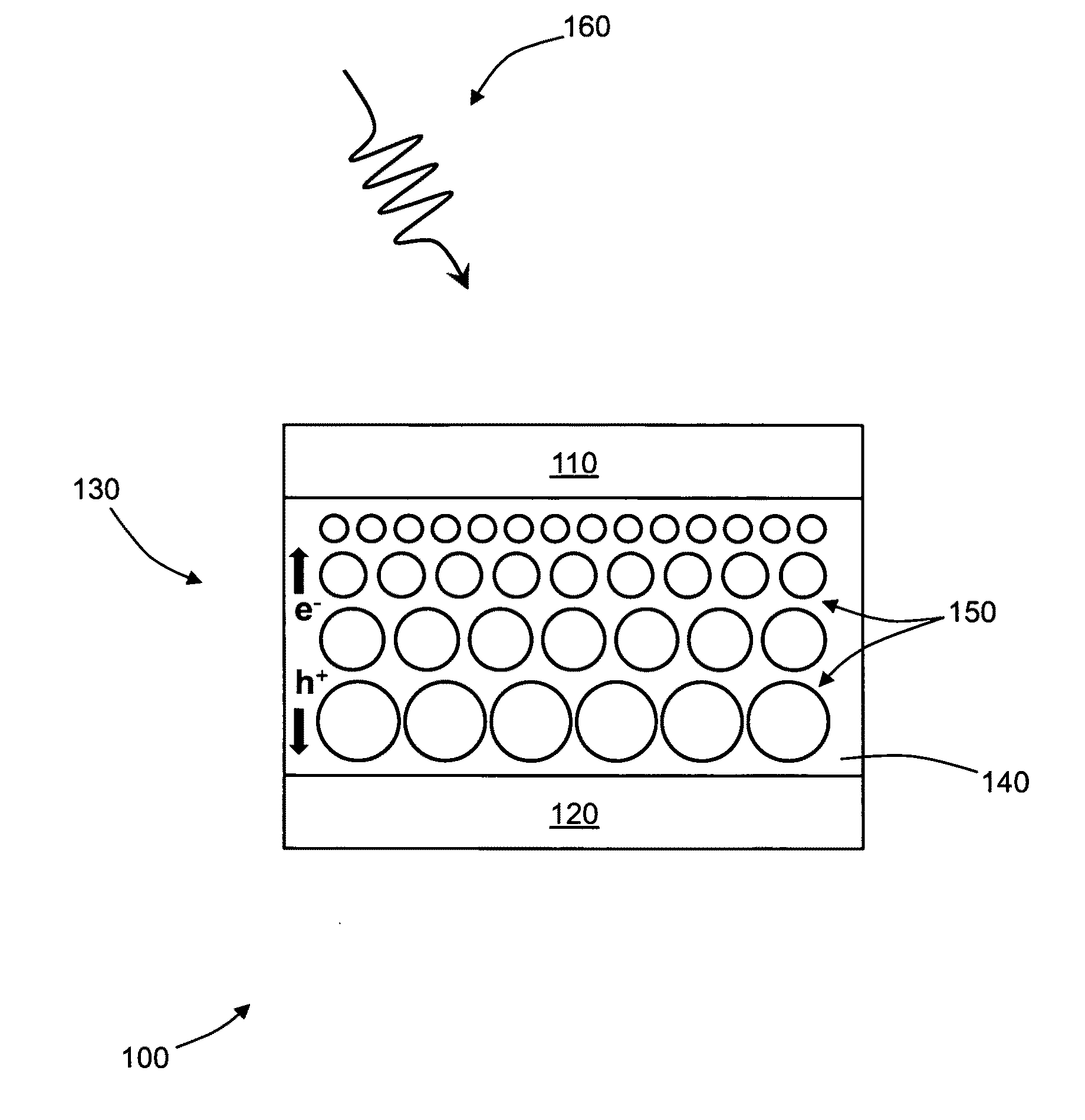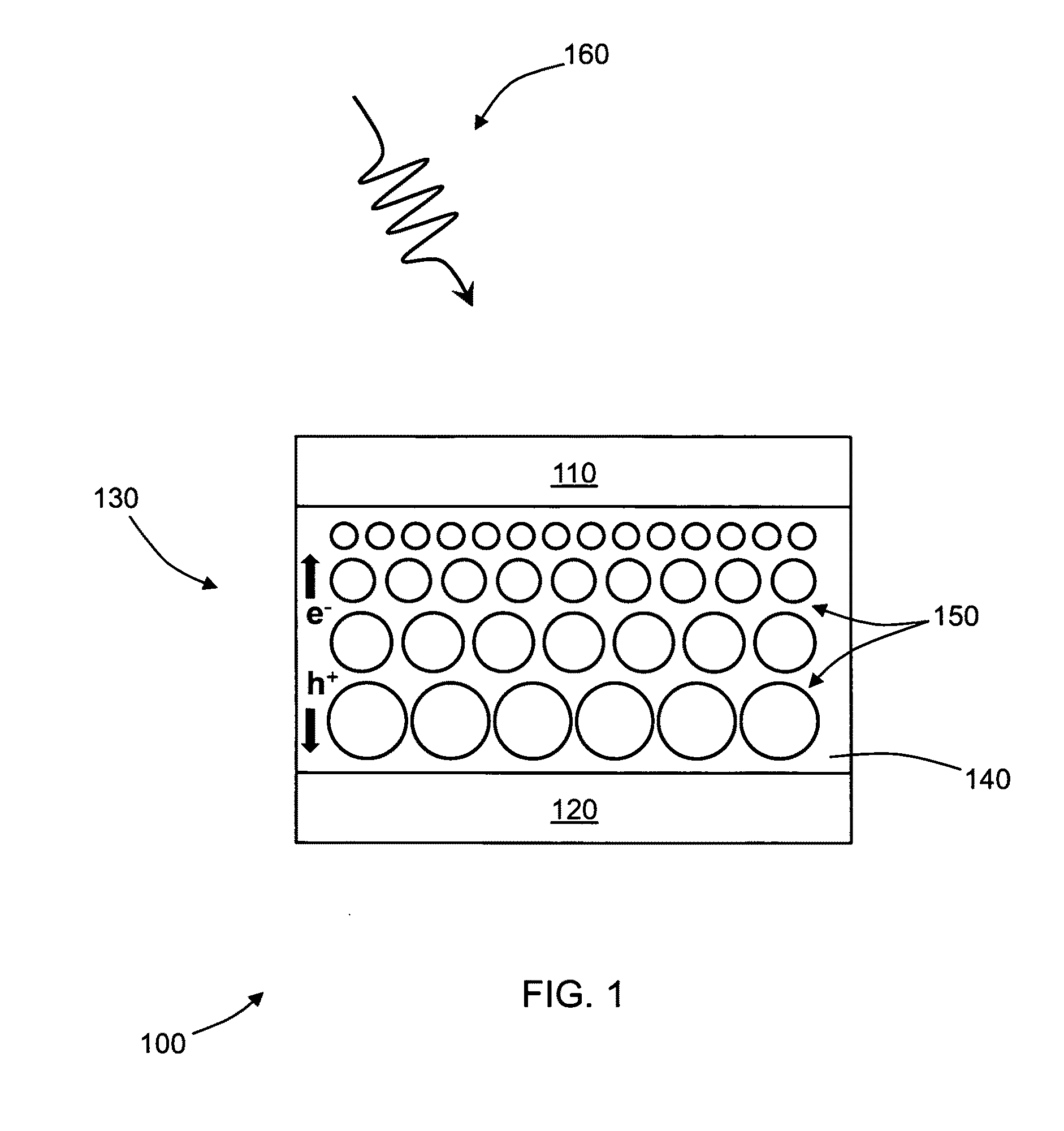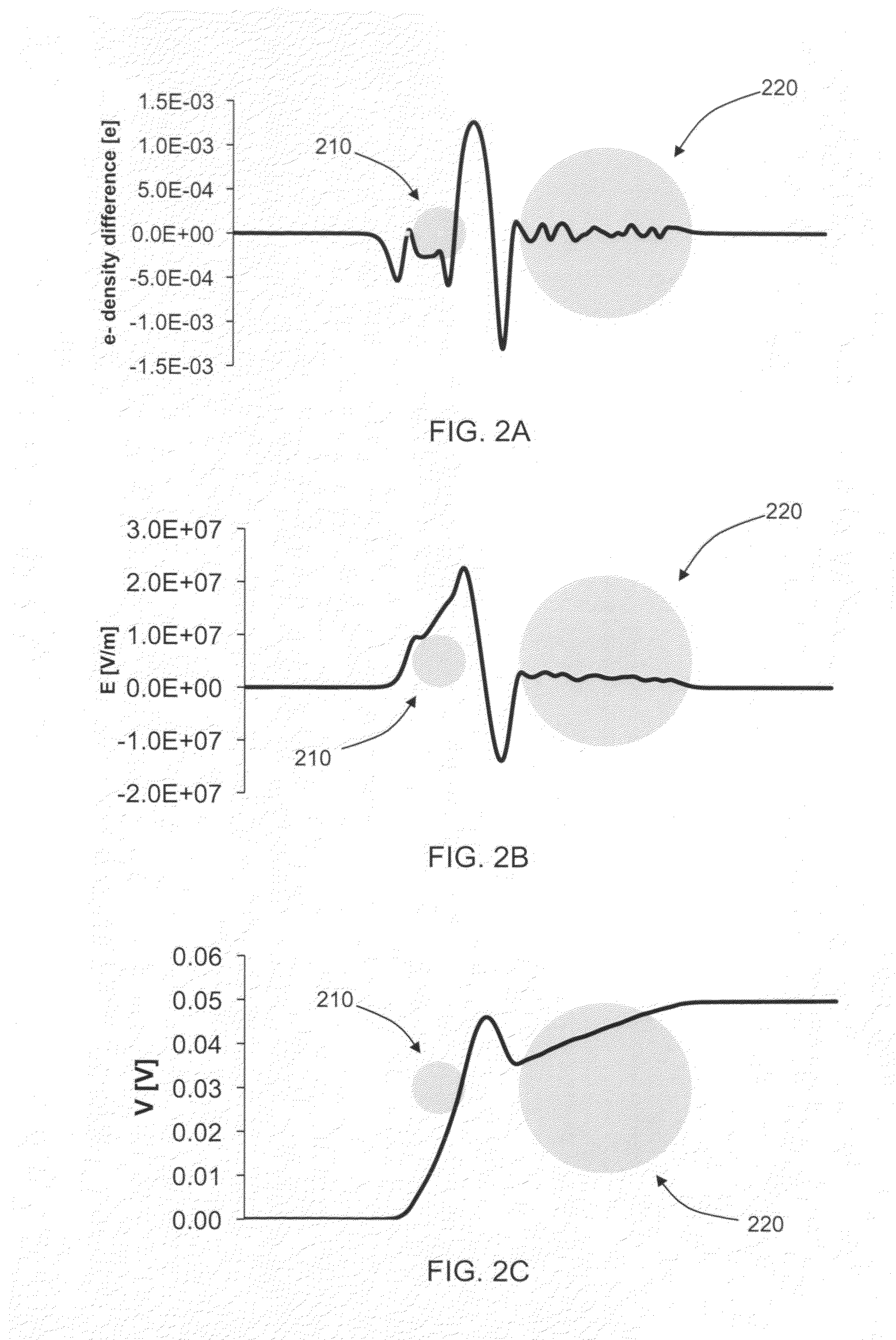Quantum dot solar cell with quantum dot bandgap gradients
a solar cell and quantum dot technology, applied in the field of photovoltaic cells, can solve the problems of limited market penetration of solar cells, limited material availability, and high cost of materials
- Summary
- Abstract
- Description
- Claims
- Application Information
AI Technical Summary
Benefits of technology
Problems solved by technology
Method used
Image
Examples
Embodiment Construction
[0023]Developing efficient and cost-effective solar cells can be a daunting task, but one with considerable payoffs in terms of global climate change and energy security. Some existing photovoltaic technologies employ nanoparticles or quantum dots in the active photovoltaic material. However, many existing techniques face difficulties with exciton recombination, charge transport, and limited device efficiency. The present invention is directed to a quantum dot solar cell (QDSC) having bandgap gradients for greater efficiency.
[0024]In embodiments of the present invention, quantum dots are used in the active photovoltaic material for converting photons into charge carriers, primarily by disassociating excitons (particles comprised of pairs of negatively-charged electrons and positively-charged holes). Quantum dots have many desirable physical properties in photovoltaics, such as a tunable bandgap and Fermi level. A quantum dot's bandgap can be much different than the bulk material due...
PUM
 Login to View More
Login to View More Abstract
Description
Claims
Application Information
 Login to View More
Login to View More - R&D
- Intellectual Property
- Life Sciences
- Materials
- Tech Scout
- Unparalleled Data Quality
- Higher Quality Content
- 60% Fewer Hallucinations
Browse by: Latest US Patents, China's latest patents, Technical Efficacy Thesaurus, Application Domain, Technology Topic, Popular Technical Reports.
© 2025 PatSnap. All rights reserved.Legal|Privacy policy|Modern Slavery Act Transparency Statement|Sitemap|About US| Contact US: help@patsnap.com



